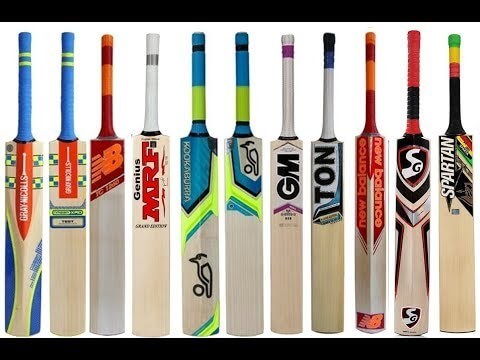How Do You Select a Cricket Bat?
We have had plenty of young cricketers attend the centre with the wrong cricket bat. When I say the wrong bat it could
 be
the incorrect size, weight or even the wrong type of willow. All these variables can have a massive impact on a player’s performance.
be
the incorrect size, weight or even the wrong type of willow. All these variables can have a massive impact on a player’s performance.
Type of Willow
Let's start with the type of willow (wood). There are two types of willow commonly used for manufacturing cricket bats - English (White) Willow and Kashmir Willow. Willow is the only type of wood that can provide the strength and compression needed for a cricket bat. There are big differences in the performance of the two types of willow. Firstly, English Willow trees are grown in England whereas Kashmir Willow is grown in the Kashmir area of north west India. English willow is specifically grown for manufacturing cricket bats and they are visibly different to Kashmir willow bats. English willow is white while Kashmir willow is brownish in colour. Kashmir willow bats are heavier than English willow bats and much cheaper to buy. They don’t 'ping' like English willow bats and junior cricketers certainly don’t get the value for their shots with Kashmir Willow bats..
Willow Grading & Cost

Some cricket bats cost more than others because willow comes in different grades. As a rule of thumb, the softer (narrow grain) willow has excellent performance qualities but has a shorter lifespan, whereas the harder (broader grain) willow tends to last longer but takes time before you get optimum performance from it. All bats are made from a natural material so the grain structure can vary. Every piece of willow is graded as follows:
Very best Grade 1+ English Willow - This is the best willow that money can buy. The blade is unbleached and usually has 8 to 12 blemish free straight grains. The price of one of these bats can be in excess of $1000 for a full sized (short handle) blade. It is very rare that Junior bats are produced using Grade 1+ Willow. This level of willow is also referred to as Players Grade.
Grade 1 English Willow - High quality unbleached English willow. As above but with a slightly broader grain and sometimes a slight red edge. Typically 7-10 straight grains on the face.
Grade 2 English Willow - Unbleached English willow with some minor blemishes, red wood on the edge and a slight irregular grain. Again, can be 6 to 10 grains.
Grade 3 Willow - Some of these bats will be bleached English willow to cover up a more irregular grain and more blemishes.
Grade 4 Willow - This will be bleached English willow which is often covered up with a protective facing and sold as "non oil" bat.
Kashmir Willow - Kashmir Willow is harder and generally heavier than English Willow, so doesn't perform as well. This type of bat is ideal as a starter bat for use against a softer ball (Incrediballs, tennis or taped ball, Wonderballs etc.) For these reasons they are cheap to buy and a lot of Rookie level or Under 12 C and D grade players use them. Players don't get the optimum outcome when they hit a leather cricket ball with these bats.
BAT SIZE
Bat size depends on the height and age of the player. The table below is a useful guide.
| Bat Size |
Approx Age |
Height of Batter | Bat Length in cms | Bat Width in cms |
| 0 |
3-4 |
to 123cm |
62.8 to 64.7 |
9.5 |
| 1 |
4-5 |
123-130cm |
67.9 |
9.5 |
| 2 |
6-7 |
130-137cm |
70.1 |
9.5 |
| 3 |
8 |
137-145cm |
73 |
9.6 |
| 4 |
9-11 |
145-150cm |
75.9 |
9.6 |
| 5 |
10-12 |
150-157cm |
78.8 |
10.2 |
| 6 |
11-13 |
157-163cm |
81.1 |
10.2 |
| Harrow |
12-14 |
163-175cm |
82.8 |
10.4 |
| Full SH |
15+ |
175-188cm |
85.2 |
10.8 |
| Full LH |
15+ |
over 188cm |
87 |
10.8 |
WEIGHT
The weight of the cricket bat is very important and can have huge impact on the performance of a player. A heavy bat for a young player
will make it hard to lift and swing which will limit their ability to play horizontal blade shots like the cut and pull. Senior players
make the same mistake and you should never buy a bat without the player picking it up. Bats might tip the scales at the same weight but
depending on the shape of the blade they can pick up very differently. As a guide, senior bats can weigh anywhere between 2lb 6ozs to 3lb
2ozs.
Leave a Comment
Also, KW is less in performance when compared to EW, but have more endurance and long lasting.
Weight for my son. He plays first team and loves batting. He only turns 16 today and is 1.83m. He opens bowling for his and hence a allrounder. He is not as strong as a 20+ year old but the same height. I want to buy him a good bat that is not to heavy, as the Kookaburra bat he currently playes which
Is far to heavy.